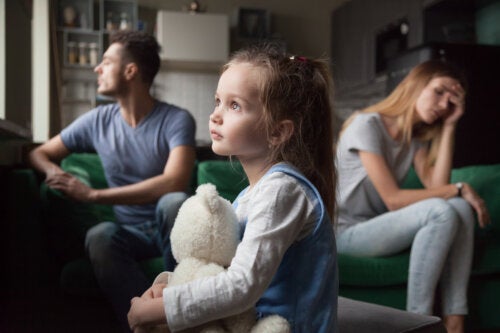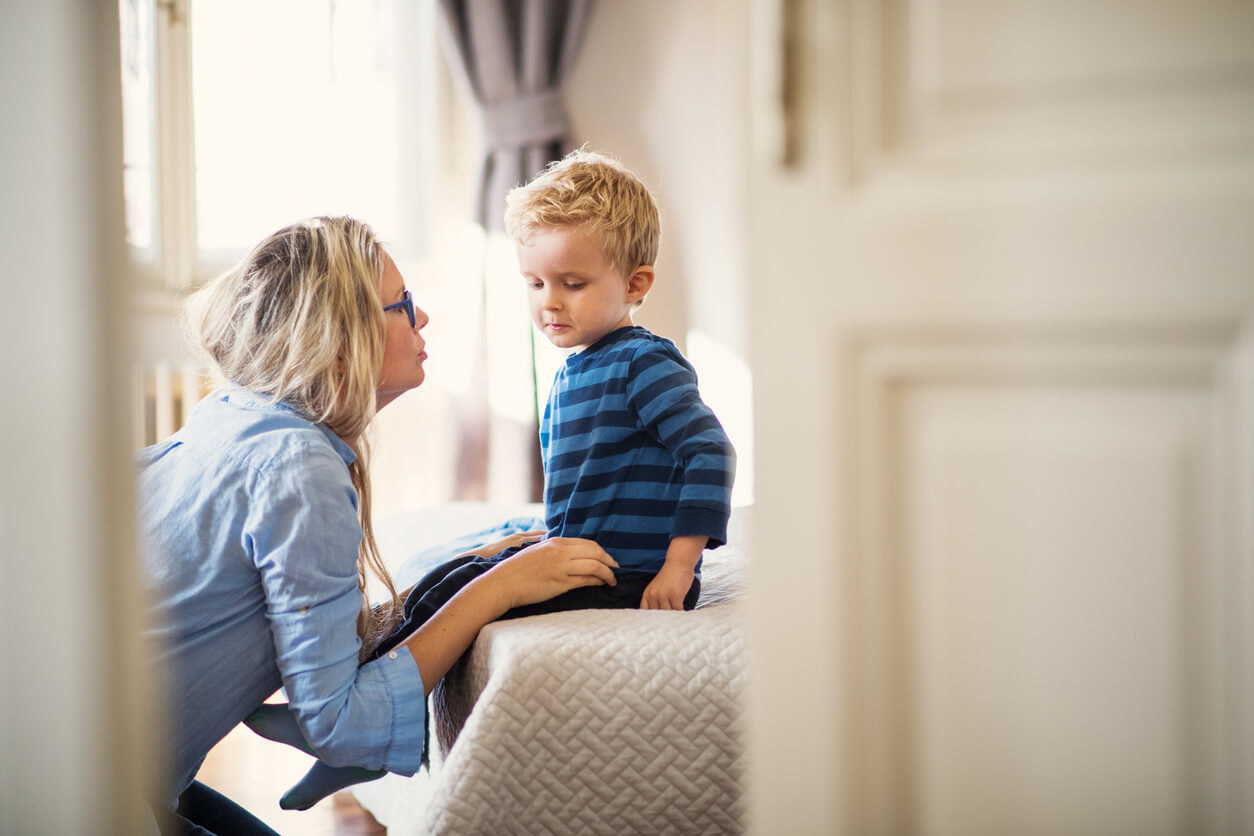Why Not Hide Difficult Situations from Children?

Unfortunately, life isn’t always simple or fair. All individuals and families, at some point, can go through complicated stages that even for adults are difficult to manage. Then, in an attempt to preserve the innocence and peace of mind of little ones, we may be tempted to keep them aside and not share with them what’s happening. However, today we want to tell you why it’s important not to hide difficult situations from children.
There are several experiences that can put us in this dilemma. For example, a serious illness, the death of a family member, a job layoff, a divorce, or separation. In short, adverse situations that can cause pain and worry, but which inevitably affect children as part of the family nucleus. How can we manage them without hiding what’s happening from them, but without causing them unnecessary harm? We’ll explore this question below.
Learn why you shouldn’t hide difficult situations from children
First of all, it’s understandable that you’ve had the idea of removing your children from the conflict taking place. We know that you do this with the best of intentions and in an effort to spare them suffering. However, the decision you make in this regard may affect your relationship and also your child’s emotional development. For this reason, so that you can make an informed decision, we’ll tell you what happens when you hide difficult situations from your children.
Worry is aggravated
Although we may think that by hiding information from them, we’re protecting them from worry, the truth is that we may even aggravate it. Keep in mind that children are very perceptive and will realize that something’s going on.
Children will notice the changes resulting from the problem in their daily lives and routines. Similarly, they’ll notice the mood of their parents, who may be sadder, more irritable, or more absent than usual. They may not know why, but they’ll know that everything’s different now and this will lead them to look for explanations.
In this search, they may conclude that they’re the cause of the problem and develop a great sense of guilt. Also, they may worry more than they should by imagining some possible catastrophic explanations that are far removed from reality.

When we hide difficult situations from our children, trust is damaged
A healthy and solid bond with children requires trust on both sides. By hiding the truth from them, we can damage that trust. When they find out what’s going on, and know that we’ve lied to them, they may feel betrayed. But this feeling can appear even if they only perceive that we’re evading the issue or offering unconvincing explanations. If your little ones feel that we don’t trust them to share the truth, they won’t trust us either.
Overprotection isn’t the answer
At the same time, it’s important to consider that we won’t always be able to protect them and that life will inevitably bring them complicated situations. Therefore, we can use this opportunity to help them develop resilience and teach them how to manage their emotions in difficult moments. This will undoubtedly be a valuable learning experience that we’re depriving them of by hiding reality from them.
What can we do rather than difficult situations from children?
As you can see, hiding difficult situations from children isn’t the best policy. But it’s important to try to prevent them from suffering as much as possible. To do this, we need to know how to manage communication with them. Here are some valuable guidelines.
Tell the truth in an appropriate way
We must choose the appropriate words according to the age and maturity of the child. The key is always to tell the truth, but not provide unnecessary information that may confuse or overwhelm them. That is, create a speech that informs them concretely of what’s happening and how it affects the family and themselves.
Choose a private place and an intimate moment in which parents can communicate the news calmly. Make sure the child isn’t too tired, hungry, or irritable at that time, and eliminate all distractions, such as television. Likewise, especially with younger children, it’s important to look them in the eye and offer physical contact, such as holding hands.
Show emotions
It’s important to break the news calmly, as the child shouldn’t see us as totally overwhelmed or out of control. However, it’s positive to express our emotions and share with them if we feel sad or worried. This will help them see that it’s natural to feel this way and will produce a very beneficial emotional intimacy between both parties.

Allow children to express themselves
After communicating what’s happening, we must give them a space to express themselves, perhaps to ask questions about certain aspects that worry them or that you need to clarify. But, above all, to allow them to express their emotions.
If fear, sadness, or anger arises in them, if they burst into tears or show anger, the adults’ task will be to accompany these emotions. Many times, we restrict children by telling them that it’s not that bad or that they should be strong, but it’s essential to validate their feelings.
Develop resilience
However, this doesn’t mean that we leave children at the mercy of their discomfort. It’s an ideal time to teach them how to deal with their emotions. For example, we can encourage them to paint or write to channel their discomfort, help them name what they feel, and model for them an optimistic attitude. The way they see their reference adults dealing with adversity will be internalized as their own and used by them as well.
The family’s a team
Finally, it’s a good idea to let children feel that they’re not only part of the problem, but also part of the solution. Listening to their ideas for improving the family situation can make them feel valuable, useful, and important, and it strengthens their sense of belonging. For example, if every Friday you go out for dinner, your child may suggest making homemade hamburgers to save money after a job layoff.
However, you should always be clear that it’s not their job to worry about fixing the problem and that the adults will take care of and protect them. Burdening them with a burden that’s not theirs, such as having to cheer up their parents after a divorce, can be very damaging.
Instead of hiding difficult situations from children, create a learning opportunity
Ultimately, even though it may be hard to share with children the truth about certain situations, it’s the best alternative. This will build confidence, allow them to understand what’s going on around them, and will be an opportunity to become emotionally stronger and smarter.
Resilience, optimism, and the ability to lean on loved ones, among others, are very necessary strategies for dealing with pain and adversity throughout life. This may be a good time for your child to learn them from you.
All cited sources were thoroughly reviewed by our team to ensure their quality, reliability, currency, and validity. The bibliography of this article was considered reliable and of academic or scientific accuracy.
- Christ, G. H., & Christ, A. E. (2006). Current approaches to helping children cope with a parent’s terminal illness. CA: A Cancer Journal for Clinicians, 56(4), 197-212. Disponible en: https://acsjournals.onlinelibrary.wiley.com/doi/full/10.3322/canjclin.56.4.197
- Olineck, K. M., & Poulin-Dubois, D. (2009). Infants’ understanding of intention from 10 to 14 months: Interrelations among violation of expectancy and imitation tasks. Infant Behavior and Development, 32(4), 404-415.
